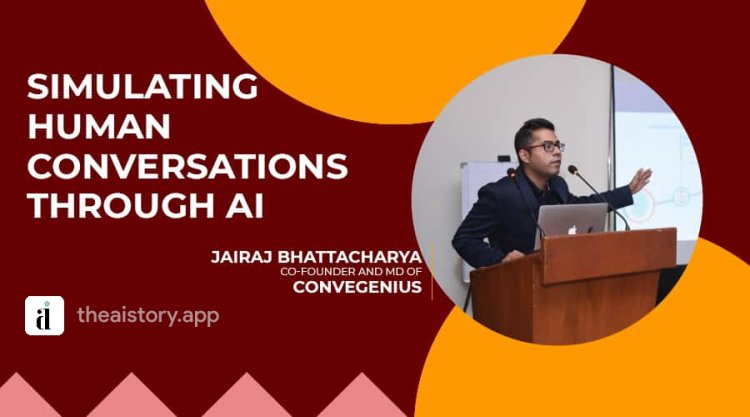SIMULATION OF HUMAN CONVERSATIONS THROUGH AI
Conversational AI simplifies queries into essentials that identify people, behaviors, and things.

Conversational AI simplifies queries on the basics.
The advent of technology has created several products that automate manual tasks to build easy-to-use, profitable businesses and make services available to everyone. One such product is using artificial intelligence to simulate human conversations. Also known as Conversational AI, this branch of artificial intelligence uses machine learning to create conversations that feel natural and personalized, like human-to-human conversations. Initially, the product gained worldwide attention for its interoperability and incredible speed of interaction. Conversational AI simplifies queries into essentials that identify people, behaviors, and things.
How It Works
Natural language processing (NLP) enables two-way interactions between computers and humans, resulting in automatic communication using messaging apps, voice assistants, and chatbots. Conversational AI is now rolled out across industries across all verticals and integrated into platforms to provide users with 24/7 non-human support. The origins of interactive AI go back to menu options for users like "Cancel my order". But today we have conversational AI that responds to everything from messages to calls.
A versatile tool that enables people to rethink how they can integrate information, analyze data, and use what they learn to improve decision-making. Artificial intelligence systems can learn and adapt when making decisions. For example, social education company ConveGenius Edu has adopted a chatbot-based learning model by integrating the WhatsApp API into its solution. This technology has simplified the teaching and learning process by removing dependencies on specific infrastructure. Interactive AI built into the platform helps each student choose their own learning path. AIled algorithms are designed to connect learners to the most relevant content. Teachers also have their own version of the chatbot that can access student data.
This allows you to map and shape students' learning paths while evaluating individual learning outcomes.
In the automotive sector, semi-autonomous vehicles have tools to alert drivers and vehicles to an approaching congestion, pothole, highway construction or other potential obstacle. A car can use the experience of other vehicles on the road without human intervention, and all "experiences" can be instantly and completely transferred to other vehicles of similar configuration.
Another prime example is the stock market, where high-frequency trading by machines has replaced much of human decision-making. When people place a buy or sell order, the computer fills the order in the blink of an eye without human intervention. Machines can detect trade inefficiencies or market differences on a micro-scale and execute profitable trades at the investor's direction.
Advantages and Disadvantages
Because each light side has a darker version, AI modeling human dialogue has several drawbacks, such as high generation costs, unemployment, emotionless interactions, and thinking outside the box. However, AI interaction tools are trained using data sets. The larger the data set, the better the service. That way, if you can train a device to show emotion, you can simulate the same thing. However, providing machines with quickly identifiable quality data and markings is also challenging. Another problem is explaining abilities. Given the rationale for a decision, it is easier to gauge how reliable the model is. Similarly, AI interactions are biased because they only make decisions based on the data they have. Also, after an AI system makes a mistake, it's hard to figure out where the problem came from.
Prospects for the future
As artificial intelligence systems evolve further in the future, the delivery of chatbots, virtual agents, digital assistants, etc. will continue to improve. According to Valuates report, the global interactive AI market is expected to reach $32.62 billion by 2030, at a CAGR of from 2021 to 2030. The growing demand for AI-powered human interactions is driving the growth trend. Conversational AI reduces human error. Many of the benefits include risk, availability 24 hours a day, 7 days a week, recurring assignment support, digital support, faster decision making, and more.
Lesson Summary
However, artificial intelligence is currently one of the most promising new technologies shaping the future. Artificial intelligence is disrupting businesses today and is having the biggest impact. This improves customer engagement and reduces costs. It also helps build brand loyalty along with personalization. AI is everywhere. AI is here.
Conversations ai, ai conversations, simulating, human simulation, human resources simulation, human resource simulation, human patient simulation, human resources management simulation, human resource management simulation, harnessing human energy simulation, human simulation paradigm, human simulation software, human behavior simulation







